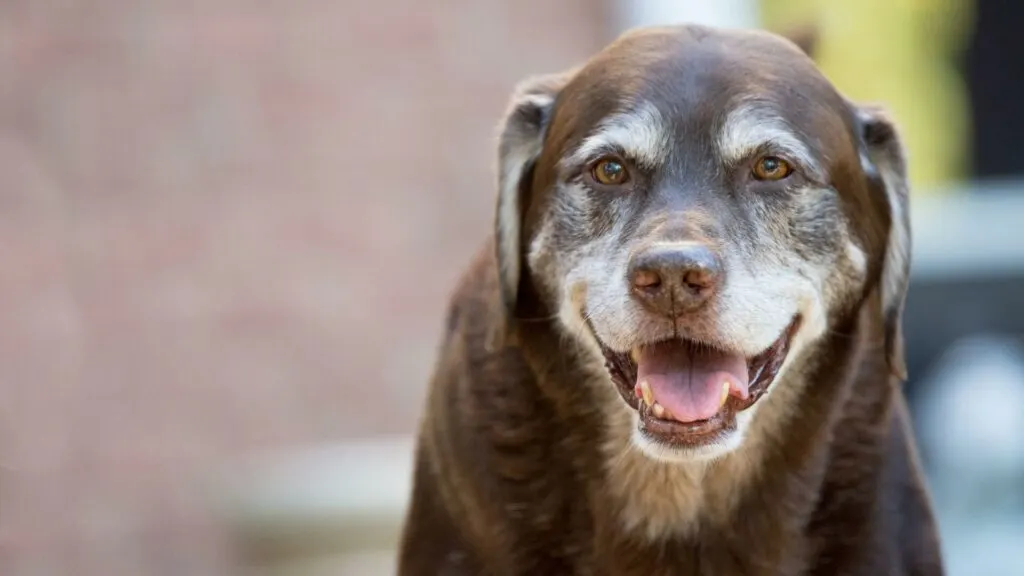Old dogs have special needs that can make travel much more challenging for them. Just like human beings, as your dog ages, their joints may ache, their hearing and vision might not be what they once were, and new environments can disorient, confuse, and even scare them.
The thing is, you can’t really blame them for it. They’re in their final years after a lifetime of companionship, fun adventures, and unconditional love. So, the least they expect from you is understanding and support.
It’s hard to see your once energetic puppy grow old and slow. But it’s up to you to make an effort, adjust plans, and even make some concessions to ensure your furry friend can still experience some of the joys, sights, and smells of travel with minimal stress or discomfort.
And don’t worry about how you’re going to make all these happen; with these thoughtful adjustments we’re about to cover, you can absolutely make car rides and plane trips less stressful for your aging furry friend.

Talk to Your Vet First
While planning your trip, you must include a full check-up with your vet to catch any health issues that could flare up or cause problems in transit.
Let your vet know where you plan to go and how, and have them confirm if your aging pup can make the journey (or if she would have to stay back).
It can be tempting to want to bypass this procedure, but please don’t embark on just any journey with your aging dog without your vet’s approval – they know critical health considerations to weigh, like arthritis, medication adjustments, use of mobility aids, etc.
They’re also in the best position to recommend any major treatment like a TPLO surgery, which could set back your timeline, or something less invasive like an Adequan injection for joint pain management.
Going for a quick check-up before traveling will allow you to discuss your dog’s changing physical abilities and how to transport them comfortably. So, please take it seriously.
Gradually Shift Your Dog’s Routine
Dogs thrive on predictability. So to prepare your aging pup for travel disruptions, start tweaking her schedule 1-2 weeks beforehand. Gradually shift mealtimes, walks, sleep, play, etc., closer to what will happen during transportation. This helps greatly with digestive issues and confusion!
Also, irrespective of which route you plan to travel with, here’s a suggestion for you to buy a comfortable carrier for your dog (a soft-side carrier would be perfect), place her in it, and take her on short 10- to 40-minute drives around your neighborhood and town so she can learn that the carrier is a safe environment to stay in.
Repeat this strategy a couple of times, and during the process, try experimenting with different tools to make the ride more comfortable, like orthopedic beds, favorite toys or blankets, music to reduce stress, etc. This way, you’ll know what methods to use in handling her anxiety while in transit.
Pack Meds, Food, Water & More
Of course, you’ll bring the basics, like food, medicines, water, etc., to administer during the trip. But also pack any supportive gear your aging dog uses day-to-day, like orthopedic beds, non-slip mats, elevated bowls, etc. Items she’s familiar with will provide her with the comfort and convenience she needs to enjoy the trip.
For planes, you can bring along the travel carrier bag we discussed earlier, and please ensure you know the weight requirement of the airline you’re traveling with.
Most will only allow smaller dogs (under 20 lbs.) to travel in the cabin with you. So, ensure you make your findings and book your flight early.
Book Direct Flights
When booking your flight, book direct flights to reduce total travel time for your aging furry friend.
Lengthy layovers or connections mean more opportunities for your dog’s arthritis to flare up from all the starting and stopping. Direct flights, however, will be less taxing on their aging body and brain.
Another suggestion would be to request bulkhead rows or seats near the front with more floor space when reserving seats so your pup has more room to rest comfortably.
And please, don’t be shy about notifying airline staff that you’re traveling with a senior support animal that needs special assistance getting around the terminal and settled on the flight. The more they know about your dog’s physical limitations, the more they can accommodate their needs during transit.
Give Them Reassurance
Dogs feed off our energy, so remain visibly relaxed, patient, and upbeat when you notice them getting anxious.
Offer encouragement, praise gently, and give treats to reinforce her good behaviors. You may not know this, but just having you close by with familiar scents and a calm demeanor is all your pup needs to have a sense of security and enjoy the trip.
While unexpected issues may arise, showing your pal unconditional support along the journey eases their discomfort. You want them resting peacefully rather than stressed and growling. So, show them empathy, and believe me, the journey will be smooth and stress-free!
Wrapping Up
Each moment with your aging dog is a gift – don’t take any for granted. Show them life-enriching kindness, keep her spirits vibrant, share bountiful affection, and embark on mini adventures built just for two.
The joy you’ll both reap during travel, now that they are in their golden years, will go beyond words – it will be the best memories you’ll have of when they’re no more. So, cherish every bit of it!

Jessi is the creative mind behind The Coffee Mom, a popular blog that combines parenting advice, travel tips, and a love for all things Disney. As a trusted Disney influencer and passionate storyteller, Jessi’s authentic insights and relatable content resonate with readers worldwide.
